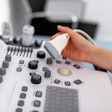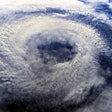Dengue fever, a viral infection common throughout the tropical regions of the world, has no specific treatment and no vaccine available to prevent it. According to the U.S. Centers for Disease Control (CDC), a global pandemic of dengue began in Southeast Asia after World War II and has intensified during the past 20 years.
Epidemics caused by hyperendemicity are more frequent, with four major virus types identified from serotypes of the genus flavivirus. Infection with one of the serotypes does not provide cross-protective immunity, so persons living in a dengue-endemic area can have up to four dengue infections during a lifetime. In addition, the geographic distribution of dengue viruses and their mosquito vectors continues to expand, with cases reported in Southeast Asia, Africa, Central America, and the southern U.S.
The disease, transmitted through the bite of the daytime-feeding Aedes aegypti mosquito, produces a spectrum of clinical illness ranging from a nonspecific viral syndrome to severe and fatal hemorrhagic disease. The CDC rates dengue fever as the most important mosquito-borne viral disease affecting humans; its global distribution is comparable to that of malaria, and an estimated 2.5 billion people live in areas at risk for epidemic transmission.
In October this year, India experienced an epidemic of dengue fever that killed at least 83 people and infected more than 5,100 in the country.
"In the past 15 years, dengue fever has been the most common cause for hospitalization in India," said Dr. P.M. Venkata Sai, an associate professor of radiology at the Sri Ramachandra Medical College and Research Institute in Porur, Chennai.
Sai and his colleagues utilized ultrasound to evaluate children with serologically proven cases of dengue fever during the recent epidemic in south India. They reported their experience with the modality during the RSNA 2003 conference in Chicago this month.
"Ultrasound findings help the clinicians to diagnose earlier than they were doing previous to having that information," Sai said.
The team performed sonographic studies on 128 patients between the ages of 1-9, mean age five years, who satisfied the criteria for dengue fever clinically. These criteria included a sudden onset of high fever, severe headache, retro-bulbar pain, and pain in the joints, according to Sai.
"Occasionally, individuals with dengue fever experience blood clotting problems. When this occurs, the illness is called dengue hemorrhagic fever. Dengue hemorrhagic fever is a very serious illness characterized by abnormal bleeding and very low blood pressure, and often results in death," Sai said.
The researchers conducted serological tests of paired sera to confirm the diagnosis in their patient population. They found 88 serologically positive cases, with classic dengue fever present in 65 patients, dengue hemorrhagic fever in 19 cases, and four patients with dengue shock syndrome.
"Three of the patients died of intracranial hemorrhage, and one patient died of gastrointestinal hemorrhage," Sai said.
The 40 patients who were serologically negative for dengue fever were excluded from the study, he said. Of the serologically positive cases, 32 patients underwent a chest and abdominal ultrasound exam on their second or third day of fever. The remaining 56 patients had the same exam performed between day 5 and day 7 of fever.
"Of the 32 serologically positive patients, who underwent the study on day 2 or 3 of their fever, six had normal ultrasound findings and the remaining 26 patients had only pseudo-thickening and edema of the gallbladder wall. The remaining 56 patients who underwent the study on the fifth to seventh day of fever had pseudo-thickening with edema of the gallbladder wall, plus minimal pleural effusion and ascites," Sai said.
The first group of 32 patients had a follow-up ultrasound exam on their fifth to seventh day of fever. The six patients who originally presented with a normal ultrasound study showed pseudo-thickening of the gallbladder wall, as well as minimal pleural effusion and ascites, he reported. The other 26 patients from this group presented with pleural effusion and ascites in addition to pseudo-thickening and edema of the gallbladder wall on the follow-up exam.
"The most common initial finding which we came across in our ultrasound studies is the gallbladder wall thickening," Sai noted.
"In the setting of a dengue epidemic, either the finding of a thickened gallbladder wall with pericholecystic fluid, or right side or bilateral pleural effusion and minimal ascites, is highly suggestive of the disease, even prior to the serology results," he said.
AuntMinnie.com staff writer
December 18, 2003
Related Reading
3-D ultrasound offers reliable assessment of gallbladder, bile ducts, May 5, 2003
Preoperative assessment of bile duct stones with sonography, November 7, 2002
Ultrasound differentiates causes of abdominal pain in kids, October 4, 2002
Ultrasound separates galactoceles from simple cysts, April 9, 2002
ER radiologist offers ultrasound expertise, February 12, 2002
Copyright © 2003 AuntMinnie.com



















